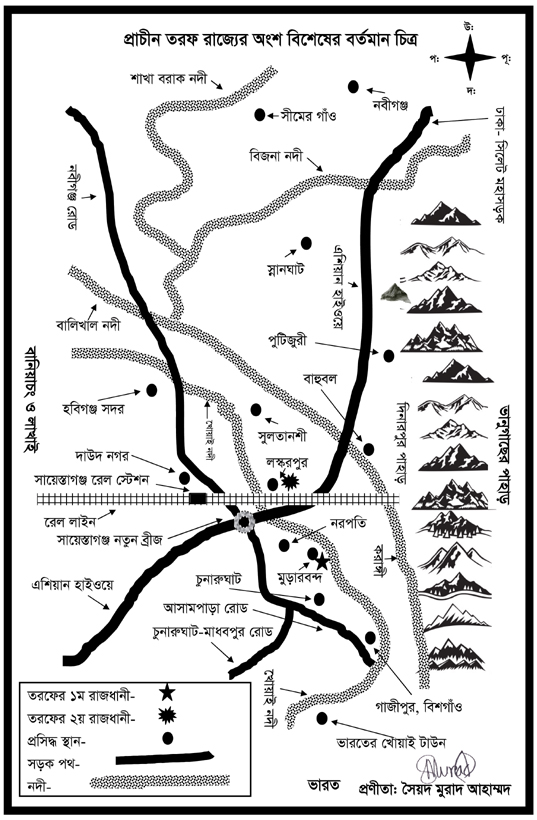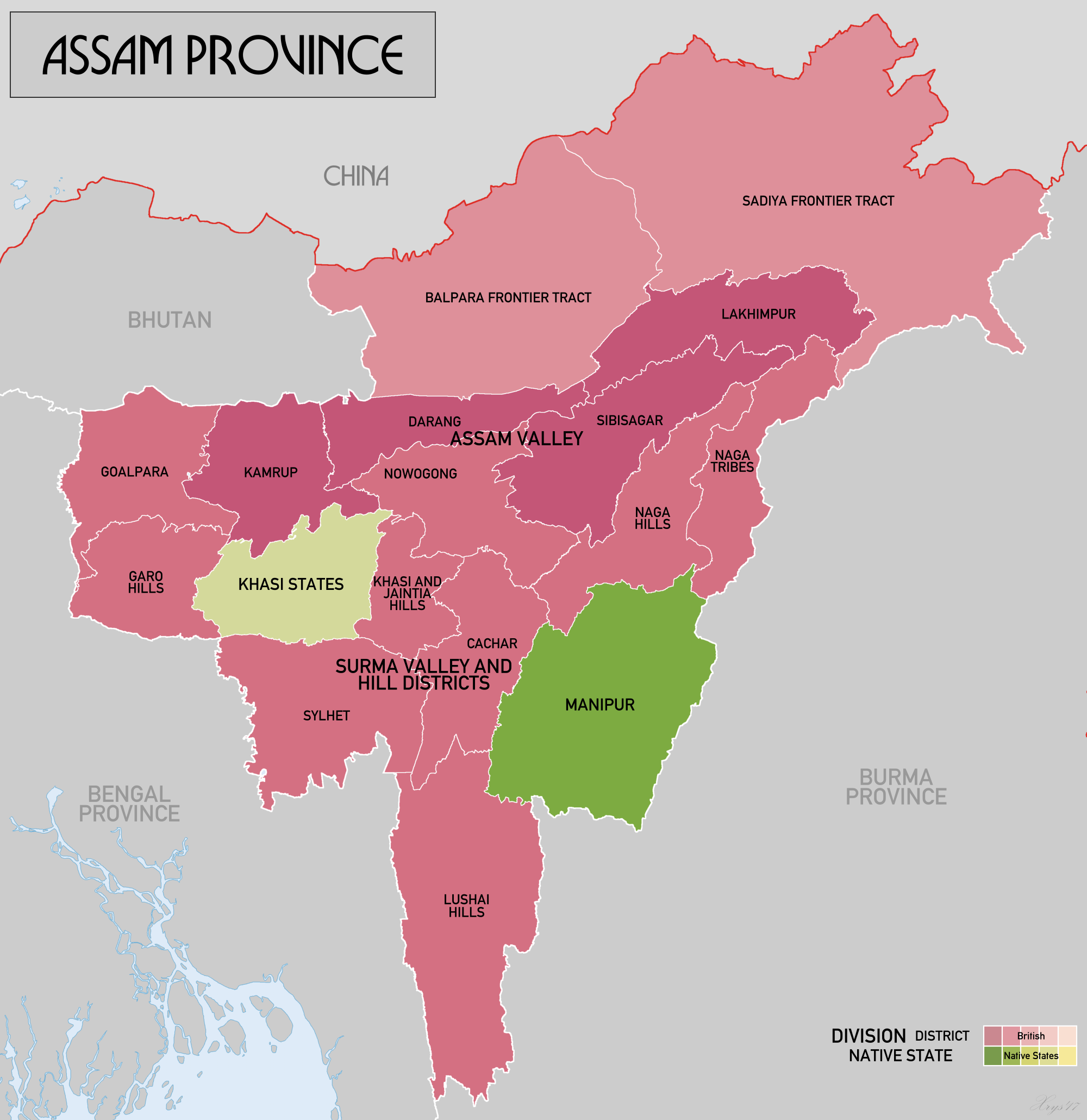|
Lakhai
Lakhai ( bn, লাখাই) is an upazila of Habiganj District in the Division of Sylhet, Bangladesh. History Following the 1303 Conquest of Sylhet, Bayazid Shah, a companion of Shah Jalal, took refuge in Bulla and propagated Islam there. Bayazid remains buried in a mazar (mausoleum) in Bulla bazaar. Lakhai was previously under the sub-registry of Charabhanga in modern-day Madhabpur Upazila. On 10 January 1922, the Lakhai thana was established as per Assam Province's gazette notification 176GK. During the Bangladesh Liberation War of 1971, a massacre was conducted in the village of Krishnapur on 18 September. The Pakistani Army also attacked the villages of Murakari and Bhabanipur. In the village of Madna, the army set fire to the house of Dewan Ali. On 29 October, the Pakistani forces took shelter in the houses of some brokers at night in Muriyauk. Early in the morning, they wanted to go to the house of Shahjahan Chishti, a freedom fighter in Muriyauk. Unable to find Chishti ... [...More Info...] [...Related Items...] OR: [Wikipedia] [Google] [Baidu] |
Krishnapur Massacre
Krishnapur massacre ( bn, কৃষ্ণপুর হত্যাকান্ড) was a massacre of over 227 Bengali Hindu villagers which took place on 18 September 1971 in Krishnapur and neighbouring villages in the district of Sylhet in East Pakistan. In Krishnapur, the Pakistani army shot 127 Bengali Hindus to death. In the neighbouring villages more than a 100 Hindus were killed. Background Krishnapur was a remote village in the district of Sylhet located in swamp alongside the Balabhadra river. At present the village falls under the Lakhai Upazila, in the south western extremity Habiganj District. Krishnapur is five kilometres to the south of Lakhai police station. To the south of the village runs the Balabhadra river that separates the districts of Habiganj and Brahmanbaria. Krishnapur and the neighbouring Chandipur were Hindu majority villages. During the first six months of the Liberation War, the people of Krishnapur had led normal lives. Krishnapur, being a remote ... [...More Info...] [...Related Items...] OR: [Wikipedia] [Google] [Baidu] |
Habiganj District
Habiganj ( bn, হবিগঞ্জ, Hobigonj), formerly known as Habibganj ( bn, হবিবগঞ্জ, Hobibgonj), is a district in north-eastern Bangladesh, located in the Sylhet Division. It was established as a district in 1984 as a successor to its ''subdivision'' status since 1867. It is named after its headquarters, the town of Habiganj. History Ancient Prehistoric settlements were said to have been discovered in the Chaklapunji tea garden, near Chandirmazar of Chunarughat. Habiganj has also revealed a significant number of prehistoric tools from the bed of Balu Stream, a small ephemeral stream (water remains here only for a few hours after rainfall). Angularity and freshness of the fossil wood artifacts suggest that they did not come from a great distance and probably came from nearby hillocks. Typologically, technologically, and morphometrically, the artifacts are more or less the same as those found in the Lalmai, Comilla. The fossil wood assemblages of both of ... [...More Info...] [...Related Items...] OR: [Wikipedia] [Google] [Baidu] |
Habiganj Sadar Upazila
Habiganj Sadar ( bn, হবিগঞ্জ সদর) is an upazila of Habiganj District in the Division of Sylhet, Bangladesh. Geography Habiganj Sadar is located at . It has 38977 households and total area 253.74 km2. Demographics As of the 1991 Bangladesh census, Habiganj Sadar has a population of 225469. Males constitute 51.75% of the population, and females 48.25%. This Upazila's eighteen up population is 117014. Habiganj Sadar has an average literacy rate of 30.6% (7+ years), and the national average of 32.4% literate. Administration Habiganj Sadar Upazila is divided into Habiganj Municipality, Shayestaganj Municipality, and ten union parishads: Gopaya, Laskerpur, Lukra, Nijampur, Nurpur, Poil, Rajiura, Richi, Shayestaganj, and Teghoria. The union parishads are subdivided into 157 mauzas and 248 villages. Habiganj Municipality and Shayestaganj Municipality are each subdivided into 9 wards. Education There are five colleges in the upazila. They include Government Habi ... [...More Info...] [...Related Items...] OR: [Wikipedia] [Google] [Baidu] |
Upazila
An ''upazila'' ( bn, উপজেলা, upôzela, lit=sub-district pronounced: ), formerly called ''thana'', is an administrative region in Bangladesh, functioning as a sub-unit of a district. It can be seen as an analogous to a county or a borough of Western countries. Rural upazilas are further administratively divided into union council areas (union parishads). Bangladesh ha495 upazilas(as of 20 Oct 2022). The upazilas are the second lowest tier of regional administration in Bangladesh. The administrative structure consists of divisions (8), districts (64), upazilas (495) and union parishads (UPs). This system of devolution was introduced by the former military ruler and president of Bangladesh, Lieutenant General Hossain Mohammad Ershad, in an attempt to strengthen local government. Below UPs, villages (''gram'') and ''para'' exist, but these have no administrative power and elected members. The Local Government Ordinance of 1982 was amended a year later, redesigna ... [...More Info...] [...Related Items...] OR: [Wikipedia] [Google] [Baidu] |
Upazilas Of Bangladesh
An ''upazila'' ( bn, উপজেলা, upôzela, lit=sub-district pronounced: ), formerly called ''thana'', is an administrative region in Bangladesh, functioning as a sub-unit of a district. It can be seen as an analogous to a county or a borough of Western countries. Rural upazilas are further administratively divided into union council areas (union parishads). Bangladesh ha495 upazilas(as of 20 Oct 2022). The upazilas are the second lowest tier of regional administration in Bangladesh. The administrative structure consists of divisions (8), districts (64), upazilas (495) and union parishads (UPs). This system of devolution was introduced by the former military ruler and president of Bangladesh, Lieutenant General Hossain Mohammad Ershad, in an attempt to strengthen local government. Below UPs, villages (''gram'') and ''para'' exist, but these have no administrative power and elected members. The Local Government Ordinance of 1982 was amended a year later, redesignati ... [...More Info...] [...Related Items...] OR: [Wikipedia] [Google] [Baidu] |
Sylhet Division
Sylhet Division ( bn, সিলেট বিভাগ) is the northeastern division of Bangladesh. It is bordered by the Indian states of Meghalaya, Assam and Tripura to the north, east and south respectively, and by the Bangladeshi divisions of Chittagong to the southwest and Dhaka and Mymensingh to the west. Prior to 1947, it included the subdivision of Karimganj (presently in Barak Valley, India). However, Karimganj (including the thanas of Badarpur, Patharkandi and Ratabari) was inexplicably severed from Sylhet by the Radcliffe Boundary Commission. According to Niharranjan Ray, it was partly due to a plea from a delegation led by Abdul Matlib Mazumdar. Etymology and names The name ''Sylhet'' is an anglicisation of ''Shilhot'' (শিলহট). Its origins seem to come from the Sanskrit words শিলা ''śilā'' (meaning 'stone') and হট্ট ''haṭṭa'' (meaning 'marketplace'). These words match the landscape and topography of the hilly region. The shila st ... [...More Info...] [...Related Items...] OR: [Wikipedia] [Google] [Baidu] |
Chittagong Division
Chittagong Division, officially known as Chattogram Division, is geographically the largest of the eight administrative divisions of Bangladesh. It covers the south-easternmost areas of the country, with a total area of and a population at the 2011 census of 28,423,019. The administrative division includes mainland Chittagong District, neighbouring districts and the Chittagong Hill Tracts. Chittagong Division is home to Cox's Bazar, the longest natural sea beach in the world; as well as St. Martin's Island, Bangladesh's sole coral reef. History The Chittagong Division was established in 1829 to serve as an administrative headquarters for five of Bengal's easternmost districts, with the Chittagong District serving as its headquarters. During the East Pakistan period, the division's Tippera district was renamed to Comilla District in 1960. In 1984, fifteen districts were created by separating and reducing the original five districts of Chittagong, Comilla, Hill Tracts, Noakh ... [...More Info...] [...Related Items...] OR: [Wikipedia] [Google] [Baidu] |
Pitha
Pithas are a variety of food similar to pancakes, dumplings or fritters, originating from the Indian subcontinent, common in Bangladesh and India. Pitha can be sweet or savoury, and usually made from a dough or batter, which is then steamed, fried or griddled. Very few varieties are oven-baked or boiled, and most are unleavened and cooked on a stovetop (or equivalent). Some versions may have a filling, garnish, or sauce. Few may be set or shaped after cooking. They are typically eaten as a snack with chai, or as treats during special occasions (similar to mithai). Pitha is especially popular in Bangladesh and the eastern Indian states of Bihar, Uttar Pradesh (eastern parts), West Bengal, Odisha, Jharkhand, the South Indian state of Kerala, and the Northeast Indian states, especially Assam. Pithas are typically made of rice flour, although there are some types of pitha made of wheat flour. Less common types of pitha are made of palm or ''ol'' (a local root vegetable). Preparat ... [...More Info...] [...Related Items...] OR: [Wikipedia] [Google] [Baidu] |
Literacy Rate
Literacy in its broadest sense describes "particular ways of thinking about and doing reading and writing" with the purpose of understanding or expressing thoughts or ideas in written form in some specific context of use. In other words, humans in literate societies have sets of practices for producing and consuming writing, and they also have beliefs about these practices. Reading, in this view, is always reading something for some purpose; writing is always writing something for someone for some particular ends. Beliefs about reading and writing and its value for society and for the individual always influence the ways literacy is taught, learned, and practiced over the lifespan. Some researchers suggest that the history of interest in the concept of "literacy" can be divided into two periods. Firstly is the period before 1950, when literacy was understood solely as alphabetical literacy (word and letter recognition). Secondly is the period after 1950, when literacy slowly ... [...More Info...] [...Related Items...] OR: [Wikipedia] [Google] [Baidu] |
Launch (boat)
Launch is a name given to several different types of boat. The wide range of usage of the name extends from utilitarian craft through to pleasure boats built to a very high standard. In naval use, the launch was introduced as a ship's boat towards the end of the 17th century. On each warship, the launch was usually the largest boat out of those carried aboard. It could be propelled by oar or sail, with this type remaining in service into the 20th century. Steam launches were introduced on a trial basis in 1867, but as steam-powered ship's boats became more common, the majority were steam pinnaces. Other military examples were the various motor launches used in the 20th century, employed for harbour defence, anti-submarine patrols, escorting coastal convoys, minesweeping and recovering aircrew from crashed aircraft. Generally, these were decked boats, some of which were capable of fast speeds. A powered boat operated by a regulatory or official organisation may be termed a la ... [...More Info...] [...Related Items...] OR: [Wikipedia] [Google] [Baidu] |
Union Parishad
Union council ( bn, ইউনিয়ন পরিষদ, translit=iūniyan pariṣad, translit-std=IAST), also known as union parishad, rural council, rural union and simply union, is the smallest rural administrative and local government unit in Bangladesh. Each union council is made up of nine wards. Usually one village is designated as a ward. There are 4,562 unions in Bangladesh. A union council consists of a chairman and twelve members including three members exclusively reserved for women. Union councils are formed under the ''Local Government (Union Parishads) Act, 2009''. The boundary of each union council is demarcated by the Deputy Commissioner of the District. A union council is the body primarily responsible for agricultural, industrial and community development within the local limits of the union. History The term ''union'' dates back to the 1870 British legislation titled the ''Village Chowkidari Act'' which established union ''panchayats'' for collecting tax ... [...More Info...] [...Related Items...] OR: [Wikipedia] [Google] [Baidu] |
Jute
Jute is a long, soft, shiny bast fiber that can be spun into coarse, strong threads. It is produced from flowering plants in the genus ''Corchorus'', which is in the mallow family Malvaceae. The primary source of the fiber is ''Corchorus olitorius'', but such fiber is considered inferior to that derived from ''Corchorus capsularis''. "Jute" is the name of the plant or fiber used to make burlap, hessian, or gunny cloth. Jute is one of the most affordable natural fibers and second only to cotton in the amount produced and variety of uses. Jute fibers are composed primarily of plant materials cellulose and lignin. Jute fiber falls into the bast fiber category (fiber collected from bast, the phloem of the plant, sometimes called the "skin") along with kenaf, industrial hemp, flax (linen), ramie, etc. The industrial term for jute fiber is ''raw jute''. The fibers are off-white to brown and 1–4 meters (3–13 feet) long. Jute is also called the "golden fiber" for its color and hi ... [...More Info...] [...Related Items...] OR: [Wikipedia] [Google] [Baidu] |




